#maryland writers' association
Text
MWA Author Showcase April 14, 2024
Looking for something to do April 14, 2024?

View On WordPress
#marylandwriters#Author Appearance#Author Showcase#books#Brian D. Berkey#Christina Merklinger#Debbi Mack#Diane Helentjaris#Elizabeth (Libby) Smith#fun#Ginny Fite#Jeff Elkins#John DeDakis#John W Harding#Linda Murphy Marshall#Mark Willen#Maryland Writers Association#Michael Pelekhaty#Priscilla Coleman Jenkins#reading#Ruth Ticktin#Savage Mill#The Last Word Bookstore#Tiffany Butler
0 notes
Text
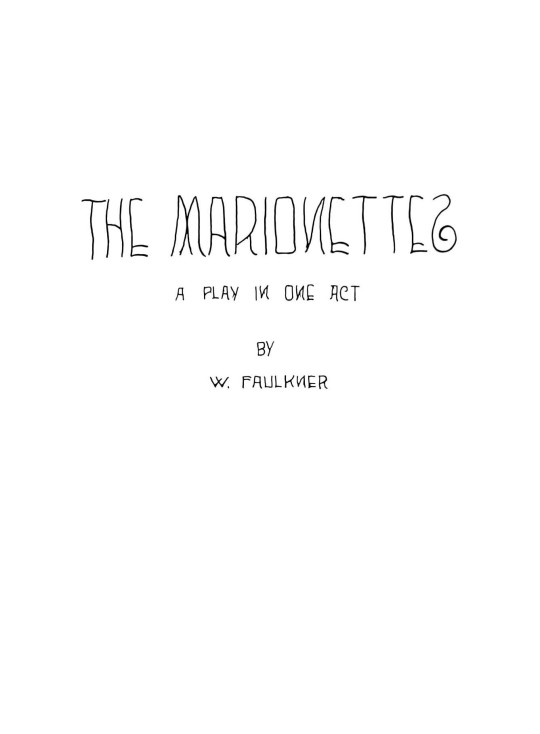

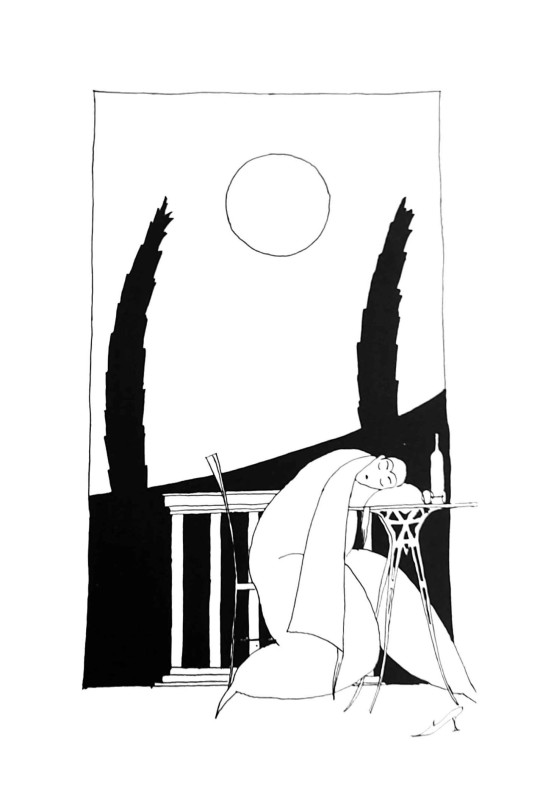

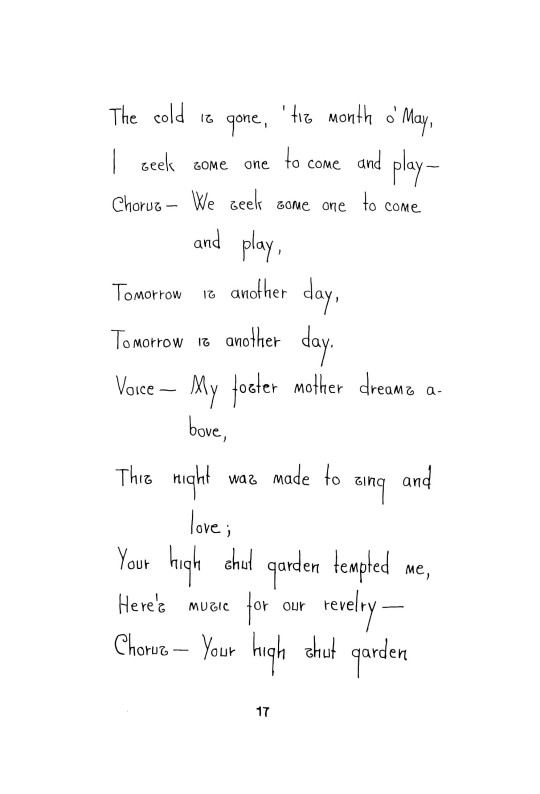
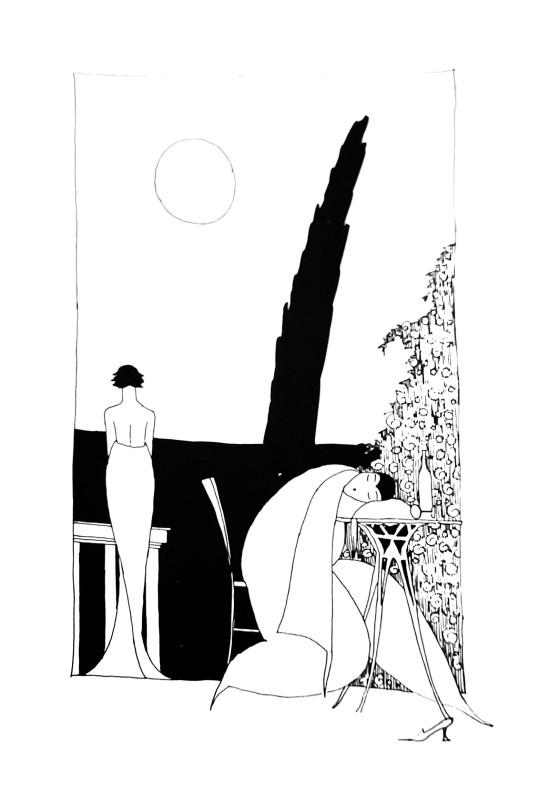


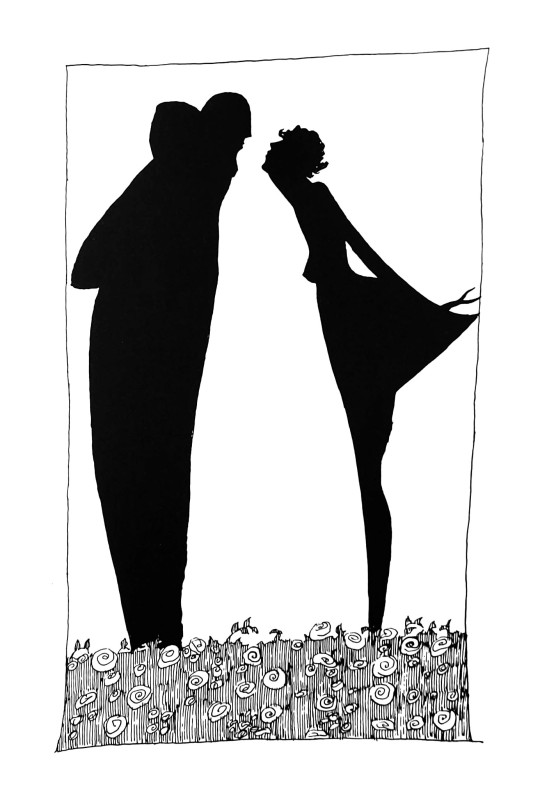
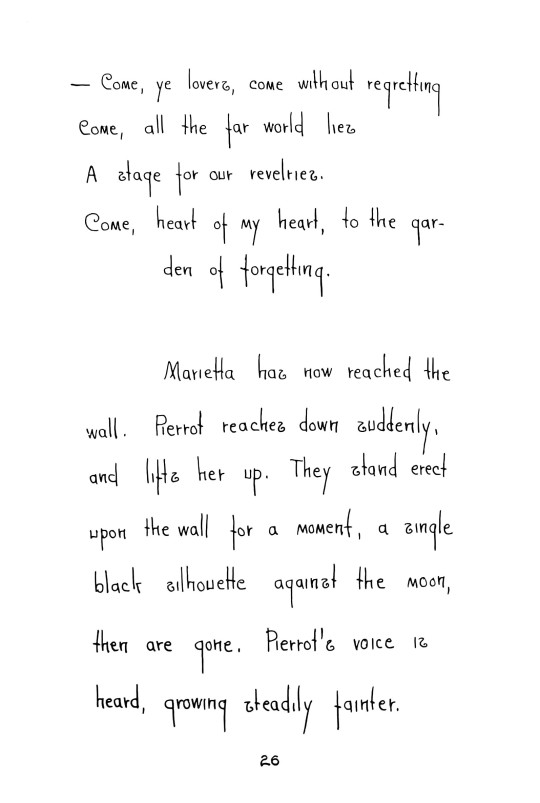
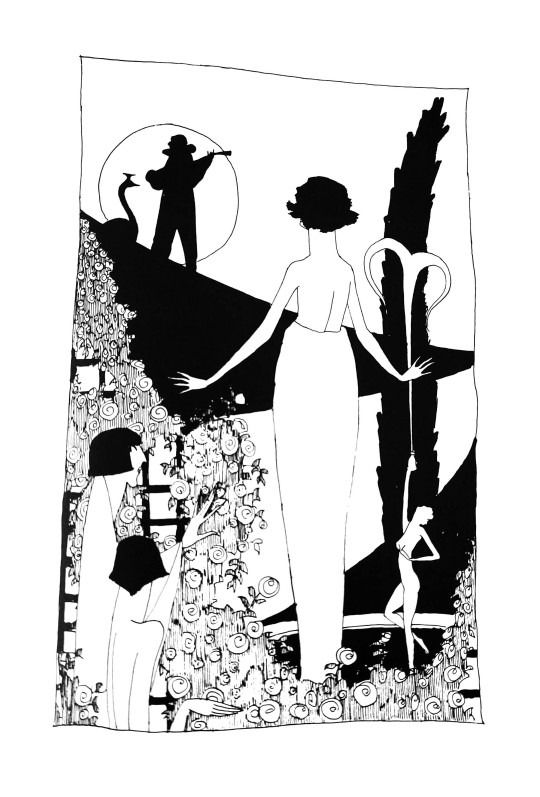
Milestone Monday
On this day, September 25, we celebrate the birthday of acclaimed American author William Faulkner (1897-1962). Faulkner was born and spent most of his life in Mississippi. Influenced by his family history and the region of the American South where he resided, Faulkner began writing at a young age and published his first novel, Soldiers’ Pay, by his 29th birthday. Faulkner went on to become a prolific and well-received writer, winning the Pulitzer Prize for Fiction in 1954 and 1962, and has been called “the greatest artist the South has produced.”
Among our many Faulkner materials, we are excited to share this facsimile of Faulkner’s unpublished one-act play The Marionettes. The play has been described as a symbolist drama that poetically explores themes of desire, sexuality, growing old, life, and love. Faulkner wrote The Marionettes in 1920 during his association with the drama group at the University of Mississippi. The play was handwritten, illustrated, and bound by Faulkner and is considered a showy display of a young man early in his career.
Our facsimile of the original manuscript was published by the Bibliographical Society of the University of Virginia in 1975 and printed in a limited edition of 126 copies at the Garamond Press in Baltimore, Maryland. It was created in memory of Linton R. Massey who was a figurehead of the Bibliographical Society of the University of Virginia and assembled and donated much of the University of Virginia’s Faulkner Collection through his personal friendship with William Faulkner.
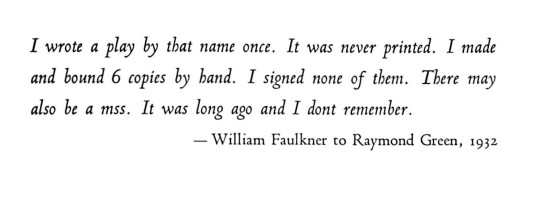

-Jenna, Special Collections Graduate Intern
#milestone monday#milestones#william faulkner#the marionettes#birthdays#bibliographical society of university of virgina#linton r. massey#manuscripts#Garamond Press#facsimiles
71 notes
·
View notes
Text
By Luke Rosiak
A Maryland school system knowingly used false information to discipline a Jewish teacher in response to her reporting to her principal that at a pro-Palestinian walkout — which the principal called “fantastic” — students praised Adolph Hitler and called for the death of Jews.
The Daily Wire reported in January that Paint Branch High School Principal Pam Krawczel gave excused absences to students to walk out of class in protest of Israel, and praised them even after the Muslim Student Association (MSA) faculty sponsor informed her that some made violent and genocidal remarks. In response, Krawczel falsely suggested that the MSA faculty sponsor, Brooke Meshel, was The Daily Wire’s source, doxxed a child, and took a photograph of students.
As a result, Montgomery County Public Schools (MCPS) has now prohibited Meshel from interacting with any member of the MSA, impeding her ability to teach her classes.
Krawczel knew the accusation was false because MCPS itself — not Meshel — was The Daily Wire’s source. Shortly after the highly-publicized walkout, the publication filed a public records request for Krawczel’s emails on the topic. The day the emails were received, this reporter emailed Krawczel asking her for comment, explaining that the story was based on the emails she had turned over.
Nonetheless, Krawczel summoned Meshel and drafted a “Summary of Concern” memo for her file, expressing “concern about the article posted in the Daily Wire in which Ms. Meshel was said to be the source.” Krawczel ordered Meshel to “reflect on the meeting” and stated that, “per this memorandum…. you are no longer to serve as the sponsor of MSA. Do not interact with any students in the MSA. Do not post any pictures of PBHS students.”
As evidence that Meshel was the source, Krawczel cited that an unnamed collection of students told her “Meshel had provided information to the writers” and told The Daily Wire “the whole event was anti-Semitic,” neither of which occured.
The letter also relied on another statement from a student that began, “to whom it may be concerned [sic], I have been asked to provide my statement on the article from the Daily Wire which has used my photograph without my permission,” claiming it “poses a threat to our lives.”
The student’s statement claimed, bizarrely, that a stranger appeared on campus distributing signs — from the Freedom Road Socialist Organization — and that the students decided to hold them and pose for photographs though the signs were “not representative of my personal or political views.” The photo was, in fact, proudly posted to Instagram by student walkout organizers, as the story made clear.
23 notes
·
View notes
Text
#VoicesFromTheStacks
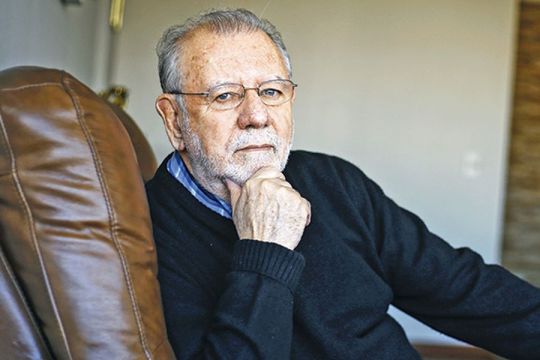
Image: Oscar Hahn from La Tercera
Oscar Hahn
Oscar Hahn, born in Iquique, Chile in 1938, began writing poetry early in life. The first book of poetry Hahn published, Esta Rosa Negra, in 1961, included poems he had written between the ages of 17 and 19. Once graduated from the University of Chile in 1963, Oscar attended the International Writing Program at the University of Iowa and received his M.A. in 1972. Upon completion of this program, Hahn returned to Chile to teach, but was arrested after the 1973 coup d'état and held in an Arica prison. Within our Oscar Hahn collection, there is a testimonial about these days in jail and their aftermath, dealing in part with how it affected him as a writer. After his release, he returned to the states and obtained a PhD from the University of Maryland, where he studied until 1977, when he returned to the University of Iowa, joining the Spanish-literature faculty.


Image: Imágenes nucleares y otros poemas by Oscar Hahn
Hahn is a celebrated, leading poet of his generation, sometimes called the Dispersed or Decimated Generation (Generacion Trilce). According to a biographical sketch in the collection, critics praised Hahn’s blend of fantastic, ironic, and realistic elements in his work, leading to the association of postmodernism and surrealism. One highlighted critical response from Kirkus Reviews contributor says Hahn “takes ordinary situations and images and implants within them a kind of surrealist grenade that explodes when least expected – and with striking effect.”
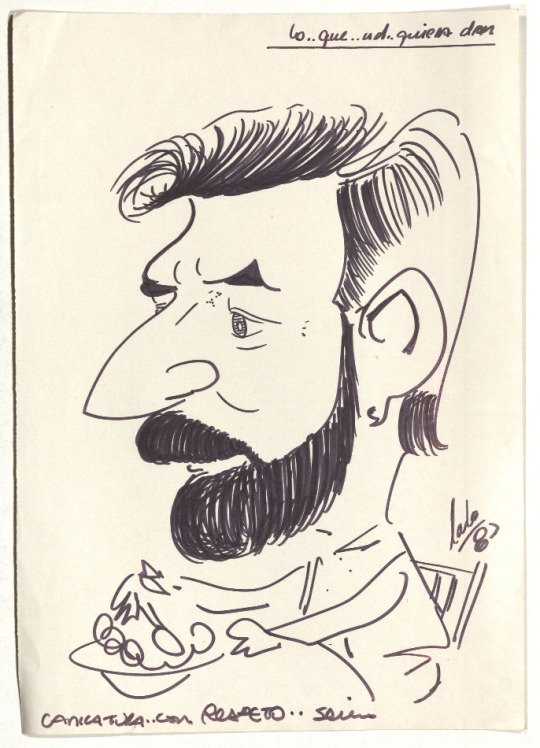
Image: Caricature drawing of Hahn from the Oscar Hahn Papers
In Special Collections and Archives, we have the Oscar Hahn Papers, containing a fairly complete list of Hahn’s publications and materials about him as well some published works in the monograph collection. A link to the collection finding aid can be found here.
-Kaylee S., Special Collections, Olson Graduate Assistant.
#uiowa#special collections#uiowaspecialcollections#voicesfromthestacks#library#poetry#chilean poetry#chile#oscar hahn
25 notes
·
View notes
Text

The profile of longtime Johns Hopkins Professor Richard A. Macksey
Richard A. Macksey, was a celebrated Johns Hopkins University professor whose affiliation with the university spanned six and a half decades.
A legendary figure not only in his own fields of critical theory, comparative literature, and film studies but across all the humanities, Macksey possessed enormous intellectual capacity and a deeply insightful human nature. He was a man who read and wrote in six languages, was instrumental in launching a new era in structuralist thought in America, maintained a personal library containing a staggering collection of books and manuscripts, inspired generations of students to follow him to the thorniest heights of the human intellect, and penned or edited dozens of volumes of scholarly works, fiction, poetry, and translation.
Macksey loved classical literature, foreign films, comic novels, and medical narratives—all subjects he taught at one time or another. Conversations with him were marked by a tendency to leap from one topic to another, connected by his seemingly boundless knowledge, prodigious memory, and sense of humor. For many at Hopkins and far beyond, he was no less than the embodiment of the humanities, both in intellect and spirit.
"Dick Macksey was a Johns Hopkins legend," says James Harris, a professor at the Johns Hopkins School of Medicine, director of the Developmental Neuropsychiatry Clinic, and a longtime friend of Macksey's. "He was a teacher, mentor, and friend to generations of Hopkins faculty and students. To me, he was the most erudite, kind, gracious, and considerate person I have ever known. He will be deeply missed and always remembered as the epitome of what makes Johns Hopkins a world-class university."
Born in New Jersey on July 25, 1931, Macksey planned to be a doctor and had launched his collection of medical books by the age of 5. After beginning his undergraduate studies at Princeton, he transferred to Hopkins and earned a bachelor's degree in 1953 and master's degree in 1954, both in Writing Seminars. He went on to earn a doctorate in comparative literature from Hopkins in 1957, writing his dissertation on Proust in French. While completing his thesis, he took a teaching position at Loyola College in Baltimore (now Loyola University Maryland) and after receiving his degree, returned to Hopkins as an assistant professor in the Writing Seminars. Quickly expanding beyond the writing workshops and "modern writers" courses he taught, he soon introduced a film class and initiated the first courses at Johns Hopkins in African American literature, women's studies, and scholarly publishing.
In 1966, Macksey led the charge in founding the Johns Hopkins Humanities Center—now the Department of Comparative Thought and Literature—as a meeting ground and incubator for problems, ideas, and discussions across disciplines. A degree-granting department, the Humanities Center sponsored graduate and undergraduate courses in literature, art, philosophy, and history; ran a graduate program; and maintained an active program of visiting scholars, professors, and lecturers. Macksey served as its director from 1970 until 1982, and he was a professor on its faculty until his retirement in 2010. Macksey continued to teach several courses until as recently as spring 2018.
The same year he launched the Humanities Center, Macksey joined French literary theorist and philosopher of social sciences René Girard, then associate professor of French at Hopkins, and deconstructionist and literary critic Eugenio Donato (both of whom co-founded the Humanities Center with Macksey) in convening an international symposium called The Languages of Criticism and the Sciences of Man. It was the first time that many leading figures of European structuralist criticism—including Jacques Derrida, Jacques Lacan, Roland Barthes, and Paul de Man—presented their ideas to the American academic community, throwing open a new conduit to avant-garde French theory and placing Hopkins at the center of an international intellectual conversation.
At the symposium, Derrida first presented his groundbreaking critique of structuralism, creating an entirely new perspective on how philosophy, literature, and language relate to and affect one another. The symposium's proceedings became the landmark study titled The Structuralist Controversy. The gathering set an intellectual standard that no U.S. humanities conference since has been able to match in intensity or intellectual stature, and heralded—or perhaps precipitated—the field's shift from structuralism to post-structuralism.
The many sides of Richard Macksey
"Everyone talks about 'interdisciplinary,' but he taught as if teaching and learning was a work of art," says Caleb Deschanel, director and Oscar-nominated cinematographer who graduated from Johns Hopkins in 1966. "[Macksey's teaching style] covered all the bases. If you were studying literature in the 19th century, it related to the music and art and sociology of the time. It's really what learning was supposed to be about. What it taught me was the fact that learning is about everything at the same time. Richard Macksey could somehow weave together all the elements and all the aspects of human existence into one thing, and that's what made him so great."
While a student, Deschanel proposed a film class to Macksey, who responded, why not? The class created a 16mm film, and Deschanel says that ever since, his work has been informed by the way Macksey taught him to question his instincts and search for the universal. He learned not to think of a piece of literature just as literature but as a work of art in a period of time, and about what we can learn from those universal ideas. "He taught you how to explode all the myths about things and come to the truth about what they were. Every time I do anything, my first thing is to doubt my first instincts about it. He saw learning and teaching the way we think of a work of art."
More than leading a life of aloof intellectualism, Macksey also existed fully on the human plane. A night owl, he was regularly spotted grocery shopping and volunteering at Baltimore's The Book Thing late into the evening and in the early morning hours; he liked to solve the trivia questions posed during Orioles games at Memorial Stadium; and he featured his cat, Buttons, as his Facebook cover photo. A fan of film and film history, Macksey was an inaugural founder and supporter of the 1970s Baltimore Film Festival, a predecessor of today's Maryland Film Festival.
It may have been partly due to his ability to exist on just a few hours of sleep that his presence had a way of being ever-present. Former student Rob Friedman, who graduated in 1981, remembers waking up at 1 a.m. to hear Macksey's voice drifting through his apartment window, and glimpsed the professor walking down St. Paul Street and "yakking with five students." On another occasion, Friedman awoke early and stepped outside at 6 a.m., only to find Macksey driving by and waving.
"He was so brilliant and had such an encyclopedic memory, and was also such an exuberant personality. He loved learning, he loved talking about what he was learning, and he also loved learning about what you had to say," Friedman says. "It's the generosity of his spirit and his contagious love of learning and excitement in sharing that learning. He might suddenly quote something in Greek."
Friedman met Macksey in 1977 when a friend advised him to get to know Macksey because of his sense of humor. Friedman left a funny note on Macksey's desk and the next day received an interoffice envelope with a humorous response. The two began sending comedic lines back and forth, and Friedman switched his major to humanistic studies so that Macksey could be his adviser.
"I was extremely unhappy during my college years, and if it hadn't been for him I wouldn't have finished school," Friedman says. "He really made a substantial difference in my life, not just academically but personally. I can't express the magnitude of my gratitude for Dick. There are probably 64 years' worth of people that—behind the scenes—he looked after."
Over the years, Macksey was celebrated for that dedication to teaching and received numerous awards. He also established awards in his name. In 1992, Macksey received the university's George E. Owen Teaching Award, given annually for outstanding teaching and devotion to undergraduates. In 1999, the Johns Hopkins Alumni Association awarded him its Distinguished Alumni Award, and the same year the Richard A. Macksey Professorship for Distinguished Teaching in the Humanities was endowed by former student Edward T. Dangel III and his wife, Bonni Widdoes. The professorship is currently held by author and Writing Seminars professor Alice McDermott.
In 2010, Macksey received a Hopkins Heritage Award, which honors alumni and friends of Hopkins who have contributed outstanding service over an extended period to the progress of the university or the activities of the Alumni Association. The Alexander Grass Humanities Institute hosts the Richard A. Macksey Lecture annually, and the Macksey Award is given each year to the graduating member of the Johns Hopkins chapter of Phi Beta Kappa who took the most academic risks.
Bridging medicine and the humanities
Famous at Hopkins for riding a Harley Davidson motorcycle to class in Gilman Hall and for the ever-present pipe between his teeth, Macksey held joint appointments in Writing Seminars and in History of Medicine at the Johns Hopkins School of Medicine, where he co-directed the Humanities Programs starting in 1990. With neurosurgeon George Udvarhelyi, he co-founded the School of Medicine's Office of Cultural Affairs in 1977 as a cross-campus initiative to engage in rigorous inquiry between the humanities and arts and health, science, and the delivery of care. Starting with just a few resources, the pair attracted funding from the National Endowment for the Humanities and the National Endowment for the Arts to bring in speakers with international reputations in medicine and the humanities, including Primo Levi and Umberto Eco.
"Because of Dick Macksey's legacy, we can position Hopkins as a key center of the intersection of humanities and medicine," says Jeremy Greene, professor of medicine and the history of medicine and director of the Institute of the History of Medicine. "He really blazed a path between the two campuses that many people have been able to follow since, and draw closer together the relevance between the humanities and medicine in the 21st century."
In 1992, Catherine DeAngelis, then the School of Medicine vice dean of academic affairs, received a grant to update the 75-year-old medical school curriculum. Wanting to familiarize med students with literature, poetry, theater, and the arts, she asked Macksey if he would assist in developing a four-year course called Physician and Society.
"I could think of no one better to teach in that course than Dick Macksey even though he wasn't in the School of Medicine. He really made that course so special, and I learned a lot from him by sitting in," says DeAngelis, now University Distinguished Service Professor Emerita and professor of pediatrics emerita.
"He was absolutely brilliant, but if you talked to him you would never know from him how brilliant he was," she adds. "He was approachable, and just so kind."
Generosity of spirit
Macksey was beloved for his generosity, the way he fully devoted himself to every conversation and cared about every person and his or her ideas. He thrived on engaging with everyone, eagerly giving his attention to students' thoughts and to them as people, and he never met a conversation or topic he didn't find interesting.
"Dick, of course, was brilliant, with a superb and elegant command of language, and that extraordinary memory," says John Astin, theater program director and Homewood Professor of the Arts. "Beyond that, he was a cherished companion, possessing infinite kindness whom I shall miss always. The world is less without him but much better for having had him for a time."
Friedman remembers one student who had discovered an obscure Portuguese poet, read a translation, and wanted to learn more. The student approached faculty in what is now the Department of German and Romance Languages and Literatures, but no one was familiar with the poet. Someone advised him to ask Macksey if he'd heard of him. "He said, 'of course,' and handed him an entire file of research and the poet's life history," Friedman says.
"I visited him two weeks ago when he was still able to talk and even laugh despite being bedridden," says Richard Chisolm, a documentary filmmaker whom Macksey hired to teach film at Hopkins in the 1980s and '90s, and a friend of Macksey's for 40 years. "He was a one-of-a-kind intellectual giant and a joyful teacher who was never self-centered; always filled with good humor, curiosity, and an intense love of conversation—in over a dozen languages."
A legendary library
In 1972, Macksey and his wife, Catherine Macksey, converted the garage of their home into a library. But his sprawling collection was never confined to its walls, spilling into bookshelves throughout their home and even occupying the steps of the ladders intended to access the upper shelves. "Chez Macksey," as it was fondly known, was where he frequently held classes and film viewings and subsequent discussions, and Macksey and his students would compete with those books for space around a table late into the night, often fueled by cookies and pipe smoke, while works of fine art looked on.
"Students for decade after decade have reveled in the life of that house: To be around a world of learning, enthusiasm, watching movies in the wee hours, listening to this expansive mind firing off in seven directions at once, and learning something they never knew before," Friedman says.
The collection holds not only an impressive number of diverse titles but also, scrawled in the margins, insights into Macksey's mind. He would frequently write on the pages, creating a sort of correspondence with the authors. His wife, a French scholar at Hopkins who died in 2000, also annotated her books, and Macksey told author Jessie Chaffee several years ago that he continued to "find" Catherine in the annotations she'd made in books.
"He was always engaging with the author, either in agreement or in argument," says Winston Tabb, Sheridan Dean of University Libraries, Archives and Museums. "[What you see is] essentially two minds operating together in one text—the author and a very intelligent reactor."
Equally impressive, says Tabb, is the fact that no current catalog exists: "The catalog was in Dick's mind."
Daily inspiration. Discover more photos at Just for Books…?
6 notes
·
View notes
Text
BALTIMORE (AP) — A container ship rammed into a major bridge in early Tuesday, causing it to snap and plunge into the river below. Several vehicles fell into the chilly waters, and rescuers were searching for survivors.
Two people were rescued from the waters under the Francis Scott Key Bridge, one in serious condition, according to Baltimore Fire Chief James Wallace. He said authorities “may be looking for upwards of seven people” but said that number could change. It was not clear if the two rescued were included in the seven.
It was not immediately clear what caused the cargo ship to crash into the bridge long before the busy morning commute in what one official called a “developing mass casualty event” in a major American city just outside of Washington.
The ship crashed into one of the bridge’s supports, causing the structure to snap and buckle at several points and tumble into the water in a matter of seconds — a shocking spectacle that was captured on video and posted on social media. The vessel caught fire, and thick, black smoke billowed out of it.
“Never would you think that you would see, physically see, the Key Bridge tumble down like that. It looked like something out of an action movie,” said Baltimore Mayor Brandon Scott, calling it “an unthinkable tragedy.”
Sonar has indicated that there are vehicles in the water, where the temperature was about 47 degrees Fahrenheit (8 degrees Celsius) in the early hours of Tuesday, according to a buoy that collects data for the National Oceanic and Atmospheric Administration.
Earlier, Kevin Cartwright, director of communications for the Baltimore Fire Department, told The Associated Press that several vehicles were on the bridge at the time of the collapse, including one the size of a tractor-trailer truck. The bridge came down in the middle of night when traffic would be lighter than during the day when thousands of cars traverse the span.
Cartwright called the collapse a “developing mass casualty event,” though he didn’t know at the time how many people were affected.
He added that some cargo appeared to be dangling from the bridge, which spans the Patapsco River at the entrance to a busy harbor. The river leads to the Port of Baltimore, a major hub for shipping on the East Coast. Opened in 1977, the bridge is named for the writer of “The Star-Spangled Banner.”
Maryland Gov. Wes Moore declared a state of emergency and said he was working to get federal resources deployed. The FBI was also on the scene.
Synergy Marine Group — which owns and manages the ship called the Dali — confirmed the vessel hit a pillar of the bridge at about 1:30 a.m. while two pilots were in control. It said all crew members, including the pilots, were accounted for and there are no reports of any injuries.
The Dali was headed from Baltimore to Colombo, Sri Lanka, and flying under a Singapore flag, according to data from Marine Traffic. The container ship is about 985 feet (300 meters) long and about 157 feet (48 meters) wide, according to the website.
In 2001, a freight train carrying hazardous materials derailed in a tunnel in downtown Baltimore and caught fire, spewing black smoke into surrounding neighborhoods and forcing officials to temporarily close all major roads into the city.
4 notes
·
View notes
Text
THIS DAY IN GAY HISTORY
based on: The White Crane Institute's 'Gay Wisdom', Gay Birthdays, Gay For Today, Famous GLBT, glbt-Gay Encylopedia, Today in Gay History, Wikipedia, and more …


1433 – Born: Renaissance Humanist philosopher Marsilio Ficino (d.1499). Ficino was one of the most influential humanist philosophers of the early Italian Renaissance, an astrologer, a reviver of Neoplatonism who was in touch with every major academic thinker and writer of his day, and the first translator of Plato's complete extant works into Latin. Ficino led the Platonic Academy of Florence, a circle of literary men and artists eager to learn from the man they nicknamed "alter Plato." His large "Platonica familia" included his student Lorenzo de' Medici, philosopher Pico della Mirandola, and poets Angelo Poliziano and Giovanni Cavalcanti, Ficino's dear friend. Throughout his life Ficino also corresponded with numerous prominent men of Europe, political and religious leaders as well as scholars.
Ficino encouraged his followers at the Platonic Academy to write love letters stressing the union of souls who have lost themselves in each other. Ficino's voluminous correspondence, which was published in 1495, contains many examples of such letters, including some to Giovanni Cavalcanti.
Cavalcanti (1444-1509), a handsome Florentine nobleman, lived for many years with Ficino at his villa and was an important member of the Platonic Academy. During a brief separation in 1473-1474 Ficino wrote letters to "Giovanni amico mio perfettisimo" ("Giovanni my most perfect friend") in which he declared his love and compared their union to those of illustrious male companions of classical times.
Ficino's formulation of platonic love exercised an important influence on artists in his own time and beyond, including Michelangelo and Leonardo da Vinci. His influence can also be seen in the homoeroticism in Michelangelo's and Shakespeare's sonnets as well as in the works of Edmund Spenser, Pierre Ronsard, and Maurice Scève.
With time Ficino's concept of platonic love, clearly a relationship between men, was heterosexualized and transformed into courtly love, a reading more acceptable to society at large. It was also subsequently desexualized entirely and came to mean a non-physical love, a notion that distorts Ficino's philosophy.


1945 – Divine (d.1988), born (Harris) Glenn Milstead, was an American actor, singer and drag queen. Described by People magazine as the "Drag Queen of the Century," Divine often performed female roles in both cinema and theater and also appeared in women's clothing in musical performances. Even so, he considered himself to be a character actor and performed male roles in a number of his later films. He was often associated with independent filmmaker John Waters and starred in ten of Waters's films, usually in a leading role. Concurrent with his acting career, he also had a successful career as a disco singer during the 1980s, at one point being described as "the most successful and in-demand disco performer in the world."
Born in Baltimore, Maryland, into a conservative, wealthy middle class family, he became involved with John Waters and his acting troupe, the Dreamlanders, in the mid-1960s and starred in a number of Waters's early films such as Mondo Trasho, Multiple Maniacs, Pink Flamingos and Female Trouble. These films have since become cult classics. In the 1970s, Milstead made the transition to theater and appeared in a number of productions, including Women Behind Bars and The Neon Woman, while continuing to star in such films as Polyester, Lust in the Dust and Hairspray.
Despite some claims made to the contrary, Divine always considered himself to be male, and was not transgender or transsexual. He used the term "Divine" as his personal name, telling one interviewer that both "Divine" and "Glenn Milstead" were "both just names. Glenn is the name I was brought up with, Divine is the name I've been using for the past twenty-three years. I guess it's always Glenn and it's always Divine. Do you mean the character Divine or the person Divine? You see, it gets very complicated. There's the Divine you're talking to now and there's the character Divine, which is just something I do to make a living. She doesn't really exist at all." At one point he had the name "Divine" officially recognized, as it appeared on his passport, and in keeping with his personal use of the name, his close friends nicknamed him "Divi".
Divine was homosexual, and during the 1980s had an extended relationship with a married man named Lee, who accompanied him almost everywhere that he went. They later separated, and Divine would go on to have a brief affair with the gay porn star Leo Ford, something that was widely written and gossiped about in the gay press. Divine would also regularly engage in sexual activities with young men that he would meet whilst performing, sometimes becoming infatuated with them: in one case, he met a young man in Israel who he slept with and subsequently wanted to bring back to the United States, something that his manager prevented him from doing.
Divine initially avoided informing the media about his sexuality, even when questioned by interviewers, and would sometimes hint that he was bisexual, but in the latter part of the 1980s decided to change this attitude, and began being open about his homosexuality. Nonetheless, he avoided getting into discussions regarding gay rights, partially at the advice of his manager, realising that it would have had a negative effect on his career.
Divine and his stage act proved particularly popular amongst gay audiences, and he appeared at some of the world's biggest gay clubs, such as Heaven in London. According to Divine's manager, Bernard Jay, this was "not because Divine happened to be a gay person himself ... but because it was the gay community that openly and proudly identified with the determination of the female character Divine".
On the evening of March 7, 1988, a week after Hairspray was released, Divine was staying at the Regency Hotel in Los Angeles. The next day, he was scheduled to film his part in the Fox network's television series Married... with Children. After dining with friends and returning to the hotel, he died in his sleep of an enlarged heart at age 42.

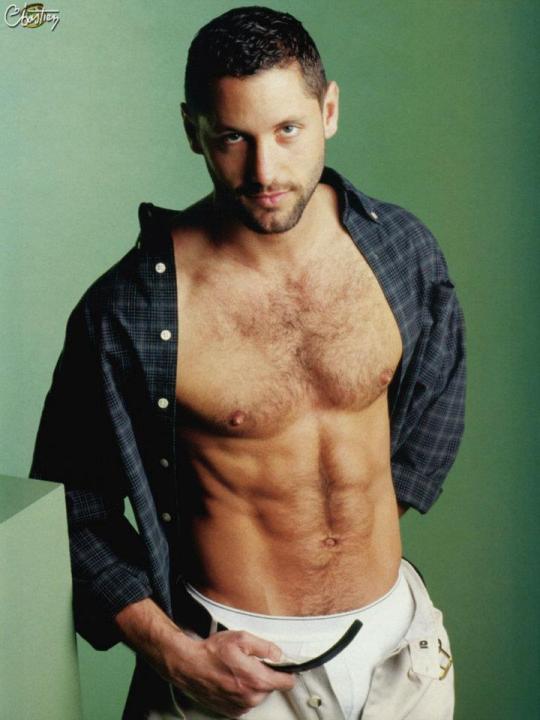
1968 – Blake Harper, born Peter Tiefenbach, in Windsor, Ontario, a former male nurse, became a porn star. He has shot over 60 pornographic gay films.
Harper was a registered nurse since 1989 and worked as such until a scout offered to set up a meeting with Steven Scarborough of Hot House Entertainment. Scarborough offered to shoot him in a gay adult film. He eventually appeared in around 60 gay adult films in a span of 7 years.
In 2006, he won an award for "Best Performer" at the Young Erotic Gay Video Awards known in the industry as the Grabbys. He also won the 2001 GayVN Award for "Gay Performer of the Year".
The 2004 documentary Naked Fame directed by Christopher Long is about Harper's ex-lover, another porn star, Colton Ford pursuing a career in the dance music industry while in a relationship with Harper. It also shows how Harper retires from adult films and returns to his original profession as a nurse in a bid to support his boyfriend and former porn star Colton Ford in his new music career. Colton also wrote "Love Has Found a Way" which is about his relationship with Harper
According to Ford, the two have split and Harper has moved back to Windsor and works as a nurse at a local hospital.


1930 – Henry van Ameringen, a low-key philanthropist, was an early and major donor to L.G.B.T.Q. and AIDS causes. (d.2020)
Henry Pfaltz van Ameringen was born in South Orange, N.J. His father, Arnold Louis van Ameringen, was a founder of International Flavors and Fragrances, a multibillion-dollar international business, noted for his longstanding support for mental health causes. His mother, Hedwig (Pfaltz) van Ameringen, who died in 1996, was known in particular for supporting the New York Philharmonic and Lincoln Center for the Performing Arts.In a rare interview in 2010, Mr. van Ameringen spoke of his coming of age in repressive times. “I knew very early that I was gay, so it was very uncomfortable growing up,” he said. “I don’t really have very happy memories.”
After graduating from the Georgetown University School of Foreign Service, he lived in Paris for several decades. He went into the family business and retired as European vice president for fragrance marketing.
In addition to participating in his family’s foundation, Mr. van Ameringen formed his own in 1967, the H. van Ameringen Foundation. When AIDS began to devastate the gay community, he donated to organizations that responded to the crisis.
Van Ameringen and business partner and husband T. Eric Galloway created the Lantern Organization, the Galvan Group, and the Galvan Initiatives Foundation which purchased properties in Hudson, New York, where Galloway owns a part-time residence. As of 2015, the Galvan Initiatives Foundation owned 60 parcels of land in the city with an assessed value of more than $12 million.
Mr. van Ameringen, whose father made a fortune in the fragrances business, gave away some $200 million, and was among the first openly gay major donors to fund L.G.B.T.Q. and AIDS-related organizations, both large and small, at a time before they enjoyed more mainstream support.
But Mr. van Ameringen wasn’t just a check writer, especially early in his philanthropic career. At God’s Love We Deliver, an organization founded in 1986 to bring meals to people living with AIDS in Manhattan, it was not uncommon to see him in an apron in the kitchen, or delivering meals.

1999 – A rape center organization in Vancouver was ordered to pay $2,030 in damages for banning a transgendered person from its drop-in center.


6 notes
·
View notes
Note
I have been reading varying opinions as to the question of whether or not Alexander Hamilton was a Freemason. Like other questions regarding his life, this seems riddled with controversy. Do you know anything about this? Thank you.
Hamilton wasn't ever a Freemason, but he did have associations with Masons; especially with Washington.
The confusion sprouted from when - Masonic writer and the historian of the Grand Council of Connecticut Royal and Select Masters - James R. Case, claimed Hamilton was a Mason in 1955. In his essay The Hamilton Bi-Centennial, he said Hamilton visited the American Union Lodge in 1779 and 1780. When actually it was Lieutenant John Hamilton — of the first Maryland regiment, and member of Lodge 6 in Maryland. Hamilton was a later member of Military Lodge 29.
Case also noted in his essay;
“Since the appearance of the Halsey story, the identification of Alexander Hamilton as a Freemason has been made a matter of record in many articles and publications. The 1946 edition of Mackey's Revised Encyclopedia of Freemasonry goes so far as to state that it was Alexander who was present at Morristown, ‘identified because [he was] the only one of that name then holding a commission in the army.’ This broad statement can readily be refuted by reference to Heitmann’s Register of Continental Officers where no less than twenty-two Hamiltons are listed. The DAR [Daughters of the American Revolution] Ancestral Register contains at least forty Hamiltons and SAR [Sons of the American Revolution] records have more than twice as many. The Hamiltons were extensively patriotic.”
(source — Masonic Perspective, by William O. Ware Lodge PDF)
Although in 10,000 Famous Freemasons, Denslow also discredits the belief about Hamilton being a Mason, but does point out that Philip Hamilton II - Hamilton's youngest son - who was an assistant district attorney in New York, was indeed a Mason. He was also a member of Albion Lodge 26, and Master of the same in 1829.
Even in The Petition by John Ward Dunsmore, which is a painting depicting the 1779 of American Union Lodge, (Which was a meeting where The Lodge met to consider a petition to create a General Grand Lodge for the United States with George Washington as the General Grand Master), Dunsmore inaccurately included Hamilton in the painting besides Washington on the left side;
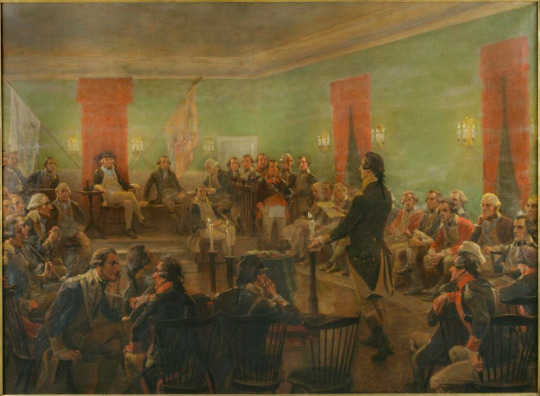
The Petition, by John Ward Dunsmore, c.1926
#amrev#american revolution#american history#alexander hamilton#historical alexander hamilton#freemasons#queries#hampye#cicero's history lessons#history#philip hamilton ii#founding fathers
16 notes
·
View notes
Text
WASHINGTON — As of this week, Uzbekistan has a new constitution. The country's Central Election Commission says more than 90% of voters approved the new basic law in an April 30 referendum, with а turnout rate of 84.5%.
International observers expressed reservations, noting that "there was no organized opposition to the amendments" and that as with previous Uzbek elections and referendums, the balloting fell "short of genuine political pluralism and competition."
But CEC Chairperson Zayniddin Nizamkhodjaev insisted the process "was conducted in full compliance with international norms and standards, our referendum legislation, and generally accepted democratic principles such as openness and transparency."
Nizamkhodjaev acknowledged "some shortcomings," which he said were "being investigated in a timely manner and under public control." Among them was a case in which a commission member was caught filling out multiple ballots and stuffing them into a box.
According to the CEC, the referendum was monitored by 383 international observers from 45 countries, including from the Office for Democratic Institutions and Human Rights (ODIHR) of the Organization for Security and Cooperation in Europe and from the Association of World Election Bodies.
Of the 19.7 million people registered to vote, Nizamkhodjaev said, ballots were filled out by 16.7 million, including Uzbeks living abroad in 39 countries.
The announced results were greeted with overwhelming cynicism on social media, where writers pointed out that neither the turnout nor the government's position has been reported at less than 80% in any Uzbek election or referendum.
However, VOA reporting ahead of the 155-article referendum had shown broad support for the proposed changes and the margin of approval was in line with results registered at the Uzbek Embassy in Washington, where VOA observed the process.
Votes cast by 903 people in Maryland, Virginia, Florida and Washington were tallied at the embassy, with 88% approving the proposed changes. Among the dissenters, a few drew cartoons on the ballot to express their disagreement, while one even tore up the paper in protest.
'We need a constitution that works'
But several voters expressed optimism. Maryland resident Zulfiya Karshiyeva, who has lived in the U.S. for about 20 years, wants Uzbekistan's doors to remain open to naturalized Americans like herself.
"I recently spent three months in Uzbekistan. I like that the government now treats us with respect. I voted 'yes' today without any hesitation," Karshiyeva said.
She represents a growing community, many of whom worry that Tashkent may enact restrictions on them for possessing foreign passports. Uzbek consular services deny any pressure but emphasize that other citizenships are not recognized if a person remains a citizen of Uzbekistan.
3 notes
·
View notes
Note
someone told me once that take me home country roads is actually not abt west virgina, it was originally going to be abt virginia but then when he was writing it that lyric worked better, but idk if thats true, i am from the southwest an i dont think ppl here care abt either Virginia
ok so this prompted me to do Research, and the actual inspiration for the song came from one of the writers, bill danoff’s childhood in massachusetts but he didn’t mention massachusetts because he didn’t think that word was musical. and then also inspired by driving a country road in maryland. and then of course the landmarks mentioned in the first verse (blue ridge mountains, shenandoah river) are more associated with virginia than west virginia, although they’re kind of shared geographically. but they were inspired by west virginia because danoff was friends with some people from west virginia. so really it’s not technically about west virginia specifically they just felt like that sounded best i guess and liked the vibes, which sort of makes it hilarious that west virginia made that song their state anthem when it’s really not about them it’s just about the general rural northern united states. ok hope everyone enjoyed this history lesson on john denver’s country roads <3
#see the only states i imagine even care about west virginia must be just like it’s bordering states#but even then like. kentucky has better things to care about. i think just being from virginia is weird#also technically the blue ridge mountains and shenendoah river are part of both states#but MOST of the mountains are in virginia so it is a little weird to refer to them as a defining characteristic of west virginia#like i live here i know this. not to doxx myself like forget i told you this but like i LITERALLY live here#blogging to you live from the blue ridge mountains for real.#i also learned there’s debate on whether ‘west virginia’ in the song was originally meant to refer to ‘western virginia’ and was shortened#anyway. it’s just a song.#asks#anonymous
4 notes
·
View notes
Video
Papa Machete from Third Horizon on Vimeo.
"Papa Machete" is a glimpse into the life of Alfred Avril, an aging subsistence farmer who lives in the hills of Jacmel, Haiti. He also happens to be a master of the mysterious martial art of Haitian machete fencing, also known as Tire Machèt. Teaching about the practical and spiritual value of the machete—which is both a weapon and a farmer’s key to survival—Avril provides a bridge between his country’s traditional past and its troubled present. The film documents his proud devotion to his heritage and his struggle to keep it alive in the face of contemporary globalization.
A Third Horizon Film
In Association with Borscht Corp
Co-Produced by Coffee and Celluloid and Four Bent Corners
Directed by Jonathan David Kane
Executive Producers / Writers: Jason Fitzroy Jeffers & Keisha Rae Witherspoon
Director of Photography: Richard Patterson
Co-Producer: Joey Daoud
Sound Design: Joel C. Hernandez
papamachete.com
haitianfencing.org
thirdhorizonmedia.com
Toronto International Film Festival '14 (Toronto, Canada)
Borscht Film Festival '14 (Miami, FL, USA)
Sundance Film Festival '15 (Park City, UT, USA)
Sheffield Documentary Festival '15 (Sheffield, UK)
Clermont-Ferrand International Short Film Festival '16 (Clermont-Ferrand, France)
Miami International Film Festival '15 (Miami, FL, USA)
Blackstar Film Festival '15 (Philadelphia, PA, USA)
Traverse City Film Festival '15 (Traverse City, MI)
Maryland Film Festival '15 (Baltimore, MD, USA)
Zanzibar International Film Festival '15 (Awarded "Best Documentary") (Zanzibar, Tanzania)
Trinidad and Tobago Film Festival '15 (Awarded "Best Documentary Short") (Port-of-Spain, Trinidad and Tobago)
New Voices in Black Cinema '15 (Brooklyn, NY, USA)
Nashville Film Festival '15 (Nashville, TN, USA)
Treefort Film Festival '15 (Boise, ID, USA)
East Oregon Film Festival '15 (La Grande, OR, USA)
Indie Grits Film Festival '15 (Columbia, SC, USA)
Little Rock Film Festival '15 (Little Rock, AK, USA)
Haiti Film Festival '15 (New York, NY, USA)
Regard sur La Court Film Festival '15 (Saguenay, Quebec, Canada)
Key West Film Festival '15 (Awarded Best Florida Short) (Key West, FL, USA)
Minneapolis Underground Film Festival '15 (Minneapolis, MN, USA)
Ambulante Film Festival '15 (Los Angeles, CA, USA)
Rooftop Films Summer Series '15 (Brooklyn, NY, USA)
Brooklyn Museum '15 (Brooklyn, NY, USA)
International Festival of New Latin American Cinema '15 (Havana, Cuba)
FEMI Guadeloupe International Film Festival '16 (Basse-Terre, Guadeloupe)
3 notes
·
View notes
Text
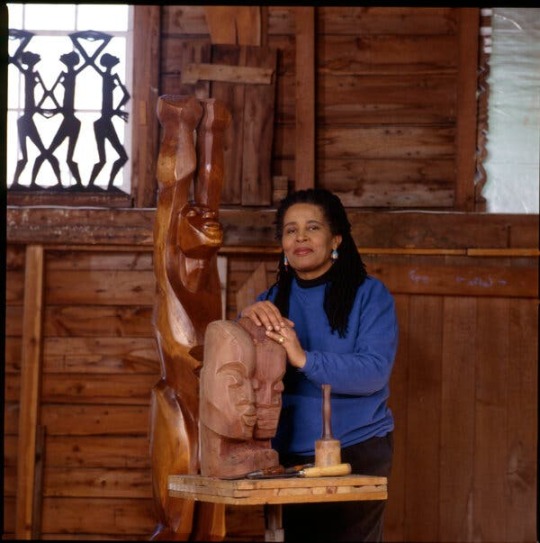
Sept. 28, 2022
Valerie Maynard, a Harlem-bred artist whose sculptures and prints explored the complexity, but also the humanity, of Black identity while tackling racism in the civil rights and apartheid eras and beyond, died on Sept. 19 in Baltimore. She was 85.
The writer Alexis De Veaux, a longtime friend, said she died of cardiac arrhythmia in a hospital.
While Ms. Maynard, who was aligned with Black Arts Movement of the 1960s and ’70s, explored various mediums and materials over a six-decade career, her work was consistently unflinching in its social commentary. It mined the historical legacies of oppression, both at home and abroad, while also celebrating the joy in the African American cultural experience and the beauty of the Black visage and form.
“This is art that summons, that creates what should be and disassembles what should not,” Toni Morrison wrote in the introduction to “Lost and Found,” a limited-edition 1989 portfolio of Ms. Maynard’s lithographs. That portfolio was part of “No Apartheid,” a celebrated series of more than 250 works using spray-painted acrylic that Ms. Maynard produced in the 1980s and ’90s. “The medium is dream,” Ms. Morrison added, “but the power is magic.”
Ms. Morrison, Stevie Wonder and Lena Horne were among the notables who purchased Ms. Maynard’s work. Her sculptures were also seen in “If Beale Street Could Talk,” Barry Jenkins’s 2018 film adaptation of the 1974 novel by Ms. Maynard’s longtime friend James Baldwin.
The plot of that book and movie involves a young sculptor imprisoned for a crime that he did not commit. Ms. Maynard and others who knew Mr. Baldwin believed that the story was based in part on the experience of Ms. Maynard’s older brother, William Maynard Jr., an aspiring actor known as Tony, who was a friend of Mr. Baldwin’s and who had been falsely accused of murdering a Marine, leading to more than six years in prison before he won his release.
Ms. Maynard provided her own commentary on such injustices with works like her acclaimed sculpture “We Are Tied to the Very Beginning,” a bust of a Black male head, its face frozen in an expression of agony with two fists clenched on a wood pedestal beneath it.
Although Ms. Maynard never achieved the fame of Mr. Baldwin, Maya Angelou, Amiri Baraka or some of the other artists associated with the Black Arts Movement, her influence was deeply felt.
“Valerie Maynard is one of the most important postwar American artists that most people have never heard of,” Bill Gaskins, the founding director of the Photography + Media & Society program at the Maryland Institute College of Art, said in a phone interview. Mr. Gaskins wrote an essay for the catalog of a 2020 retrospective of Ms. Maynard’s work at the Baltimore Museum of Art.
“She was committed to the evolution of the human species,” Mr. Gaskins said. “What did it mean to be human from the perspective of women? Of Black people? All the while, she was subtly revealing the contradictions of life in the 20th and 21st centuries, always with an eye toward our better selves.”
Ms. Maynard’s work is in “Black Melancholia,” a group show at the Hessel Museum of Art at Bard College in Annandale-on-Hudson, N.Y., that explores “the depression that racism itself generates — the dread, anger and despair that create a low-pressure area in the soul,” Holland Cotter wrote in a New York Times review in June. The show runs through Oct. 16.
Even Ms. Maynard’s large-scale works of public art — like her sweeping glass-and-tile mosaic mural in the 125th Street station of the Lexington Avenue subway line in Harlem, or her nearly 17-foot-tall stainless steel airfoil sculpture commemorating Black veterans at Ramsay Park in Boston — convey a Black point of view that she felt was intrinsic to her work.
“It’s in everything,” Ms. Maynard said of her Black identity in a 1990 interview with Art Papers, an Atlanta-based art advocacy group. “You cannot shake off who you are. Your voice, the way you sit, the way you talk, everything — it cannot be taken away.”

Ms. Maynard spent much of her career in education. She taught at Howard University, the University of the Virgin Islands and the Baltimore School for the Arts, where she founded a sculpture program. For her, fame was not the point.
“She never sought to be in the public eye,” Ms. De Veaux said. “Her art was her life. As Valerie always said, she ‘lived right on the edge of approval,’ which meant that she was free to live as fully as she wanted to, and as joyfully as she wanted to.”
Valerie Jean Maynard was born in Manhattan on Aug. 22, 1937, the middle child of William and Willie Fred (Pratt) Maynard. Her father held a variety of jobs — security guard, dockworker, bartender — while her mother stayed home with the children.
She is survived by her brother and a sister, Barbara Fraser.
Although she was born in the waning years of the Harlem Renaissance, the neighborhood was still a cauldron of cultural ferment when she was growing up there, on West 142nd Street. Her family lived next door to the poet Audre Lorde; Mr. Baldwin, who became a lifelong friend, lived nearby. “I went to school with one of his sisters and spent many hours just sitting and talking with him and his mother,” Ms. Maynard said in an interview published this month in Baltimore magazine.
Ms. Maynard told the magazine that she saw jazz luminaries like Charlie Parker and Dizzy Gillespie on their way to gigs at the Savoy Ballroom and attended Sunday services at Abyssinian Baptist Church presided over by the fiery activist pastor and future congressman Adam Clayton Powell Jr.
“You just saw these people as neighbors,” she said. “‘Oh, that’s Langston Hughes over there.’ The fame didn’t mean anything to us. It wasn’t until I was older and looking back that I saw the enormity of it.”
In her youth she took classes at the Museum of Modern Art on weekends, and she went on to study art at the New School for Social Research in Greenwich Village. She received a master’s degree in sculpture and art from Goddard College in Vermont in 1977.
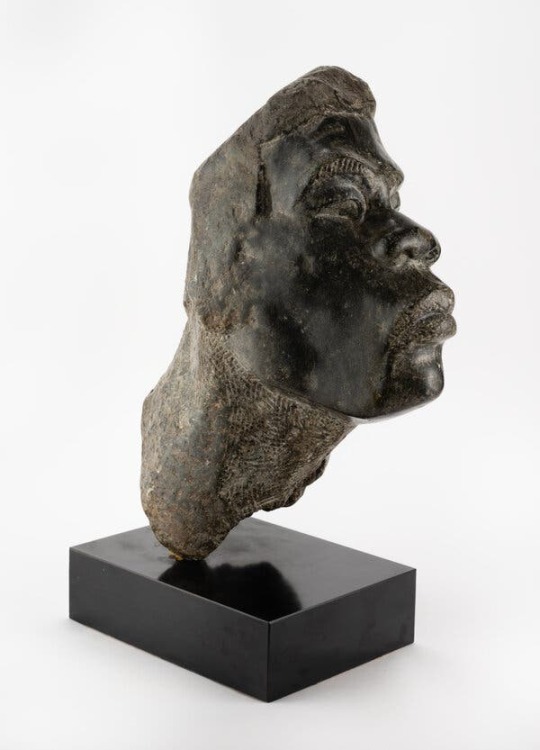
Despite her training, one of her best-known pieces, “Rufus,” a brooding bust of a man’s head, sprung from a beginner’s attempt at stone carving, plus a dash of serendipity.
While working at a summer camp in Brattleboro, Vt., in 1968, Ms. Maynard leaped from a rope swing at a swimming hole and discovered a large rock underwater that for some reason intrigued her. She later returned and hauled the hulking stone from the mud, using a rope and pulley system of her own design.
“That was another thing that Valerie was really good at,” Ms. De Veaux said. “She knew how to use her hands.”
Back in her studio, Ms. Maynard “waited for what she believed was the spirit inside the stone to reveal itself; only then did she carve away to release the spirit,” Ms. De Veaux said, adding that Ms. Maynard made a point of using hand tools, not electric. “She told me, ‘It’s all in the reveal, Alexis. You can’t write what hasn’t been revealed.’”
4 notes
·
View notes
Text
MY BALTICON SCHEDULE
Balticon 56
A Four Day Celebration of Science Fiction In All It’s Various And Exciting Forms.
Balticon 56 is going to be fantastic this year. When I’m not hanging out at the Maryland Writers’ Association table, or this is where you can find me.
Fri 4:00 PM St. George Readings: D.H. Aire and A.L. Kaplan D. H. Aire and I will read from our new and upcoming…

View On WordPress
#@marylandwriters#A. L. Kaplan#Balticon#Balticon 56#Carol Gyzander#convention#D. H. Aire#Fantasy#fun#Gwendolyn Clare#Jean Marie Ward#Joshua Bilmes#Leah Cypess#Nancy Springer#panels#Readings#Robert L. Slater#Rosemary Claire Smith#Schedule#Science Fiction#science fiction and fantasy convention
2 notes
·
View notes
Text

John Edward Bruce (February 22, 1856 – August 7, 1924) was born enslaved in Piscataway, Maryland. When he was three years old his father was sold away to Georgia prompting him and his mother to escape to DC. He and his mother Martha resided with her cousin, Busie Patterson, who was a body servant to Missouri senator Thomas Hart Benton. This relationship provided the Bruce family with opportunities and access to jobs in white upper-class communities. Martha Bruce, for example, obtained a job in Connecticut working with a white family. He enrolled in an integrated school and received his first formal education. Traveling back to Washington, he received a private education and attended Howard University.
Busie Patterson’s connection with the senator helped launch his career in journalism. At age 18 he was an assistant in the office of the New York Times. He founded several newspapers in the DC area including The Argus Weekly (1879), The Sunday Item (1880), and The Republican (1882). He was the editor and business manager for the Commonwealth. He started using the name “Bruce Grit” for his columns. He was the American correspondent for the African Times and the Orient Review in London. He became a regular columnist for several newspapers in the US, the Caribbean Islands, Europe, and Africa.
He became prominent on the lecture circuit, giving speeches that addressed lynching, the condition of southern Blacks, and the weak American political system that failed to protect the rights of its Black citizens. He joined activist T. Thomas Fortune’s Afro-American League. He became the organization’s new president when it reformed as the Afro-American Council.
He started the Negro Society for Historical Research. He became a father figure to Marcus Garvey when he joined the Universal Negro Improvement Association. He was a featured writer for the organization’s newspapers the Negro World and the Daily Negro Times. He worked for the Port Authority of New York until he retired. #africanhistory365 #africanexcellence
0 notes
Link
[ad_1] Jamison Hensley, ESPN Staff WriterJan 1, 2024, 07:49 PM ETCloseJamison Hensley is a reporter covering the Baltimore Ravens for ESPN. Jamison joined ESPN in 2011, covering the AFC North before focusing exclusively on the Ravens beginning in 2013. Jamison won the National Sports Media Association Maryland Sportswriter of the Year award in 2018, and he authored a book titled: Flying High: Stories of the Baltimore Ravens. He was the Ravens beat writer for the Baltimore Sun from 2000-2011.Probably no Baltimore Ravens fan is more invested in the team's upcoming Super Bowl run than Nic Cullison.For the past three seasons, Cullison has commemorated every Ravens victory with a tattoo. He will continue to do so until Baltimore hoists the Vince Lombardi Trophy again.Editor's Picks"The biggest question was: 'Are you going to do this until they win a Super Bowl?' That's a tattoo every week. That's a lot of work," Cullison said. "I'm like, 'We're doing this, it's game time.'"A native of Joppatowne, Maryland, the 28-year-old is on active duty for the Navy in Oklahoma, where he lives with his wife, Naomi, and three children, Raelyn, Kinsley and Camden.Cullison now has 30 tattoos of Ravens victories, all of which are done by his wife. He posts each new tattoo on his social media account."I think it's a bold choice to get tattoos for every single win," Ravens kicker Justin Tucker said. "He might be running out of space because we've been winning a lot recently. Hopefully, we can keep that going, and keep getting our guy inked up."When Tucker won a game in Detroit two years ago with a record-setting kick, Cullison got a tattoo of a goalpost with "Tucker 66 yards" inscribed inside the uprights. When Baltimore beat Houston in this season's opener, he got a tattoo of the Texans' logo with arrows shot at it along with "RIB," which stands for "Rest in Baltimore."Cullison's ink-filled mission could be coming to an end. The Ravens have the best record in the NFL at 13-3, and the second-best odds to win the Super Bowl, behind the San Francisco 49ers."It's almost unbelievable that somebody is doing this," Ravens fullback Patrick Ricard said. "He clearly likes tattoos. He clearly loves the Ravens. I'm all for it. I think it's super cool."Hopefully, he doesn't have to get many more because we will win the Super Bowl. He can just get the Lombardi Trophy and be done with it." [ad_2] Source link
0 notes
Text
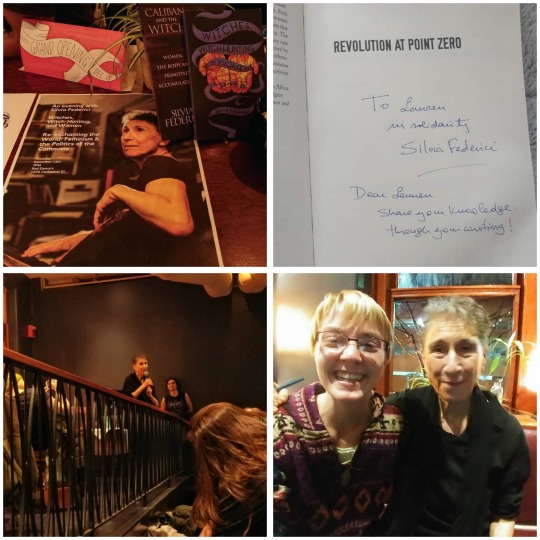
Red Emma's Coffeehouse and Bookstore
December 13, 2018
Silvia Federici and me
"I'm at Red Emma's, a collective-owned restaurant and bookstore in Baltimore City, Maryland, USA. Silvia Federici is here. She just gave a talk, from two of her books. Witches, Witch-Hunting, and Women, and Re-Enchantment of the World: Feminism and the Politics of the Commons. Silvia is described as an Italian-American scholar; a writer, feminist, activist, and teacher. She has lived in Italy and Nigeria, and currently resides here in the U.S..
°
As I sit in here, I feel a dynamic of time and place. I can tell there is something different about where I am. And something ordinary about the time. And I can tell there is something special about the dynamic.
In the question and answer portion of the talk, Silvia shared how someone connected re-enchantment with chanting, and how chanting raises consciousness. I think of how people chant.
I think of all the kinds of people who chant. Yogis, mystics, activists and revolutionists, religious practicioners, children, people at sports games. Here in Baltimore, I once sat satsangh (sacred gathering, spiritual discourse) with ShantiMayi, someone described as a 'fully realized human being'. Chanting helps people attain realizations and enlightenment.
I think of the power of voice, and the mysterious forces that animate a 'call to action'. What moves us? In Ayurveda, a 'sister science' of yoga, they point to the element of air. In that same science, the element of air is associated with the dosha Vata. Vata is ruled by the elements of air and ether, and one of its qualities is movement.
In traditions of Yoga, there are a number of stories of creation. There is a story of Prakriti and Purusha. The story varies among traditions and practitioners. It tells of pure consciousness, a steady 'is-ness', and change, illusion.
Based on my understanding of an interpretation of the story, I brought up these observations to myself: It is not new, this story of (re)enchantment. And neither is the theme of a call, after which, currently incomprehnsible change occurs.
And I brought up these questions to myself: How can I be writing this, if not for some stable and unmoving force that I am here ? And how can I still be (be still?) after some currently incomprehensible change occurs?
°
I think that is what many people fear, when it comes to change and revolution, evolution, death and creation. I think meeting feminist scholar Silvia Federici was a good choice.
°
'I wrote these musings in the notes section of my phone, last night at the grand opening of Red Emma's' (Instagram, 2018)."

December 7, 2023
Note: I bought Silvia's book, Revolution at Point Zero: Housework, Reproduction, and Feminist Struggle, that night. I asked her to sign it, to write something to encourage me to keep writing. She did not speak from that book. The colorful photo above I took that night. I wrote the caption "Mo' Peace" and posted it to my Instagram, along with the blurb above.

In these days when I feel like my voice, my writing, my vision, is largely ignored, I keep returning to media I used to make. It feels too empty here and I must remember the beauty. I lost a lot of footage. I lost of a lot of friends. I could not enjoy the hospitality I received.
°
I hope you return to me. I hope you believe. I hope you witness something magical. And I hope you see. Stop writing through me. Stop getting sick. Stop suggesting just die. Goodbye Goodbye Goodbye. See ya in another realm idiot see ya in hell 'til you doubt I wanna die in a horrific way. Sorry I see you. Sorry I believe. Sorry you torture me 'til I cry. I know it's too much and you're not enough. I know it's God.
Here's hoping for the worst.
-Your stupid bride


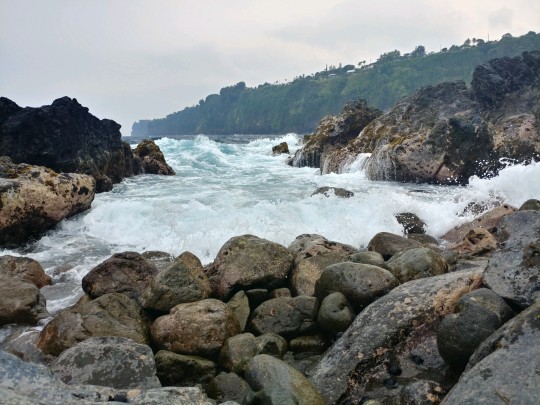
⭐

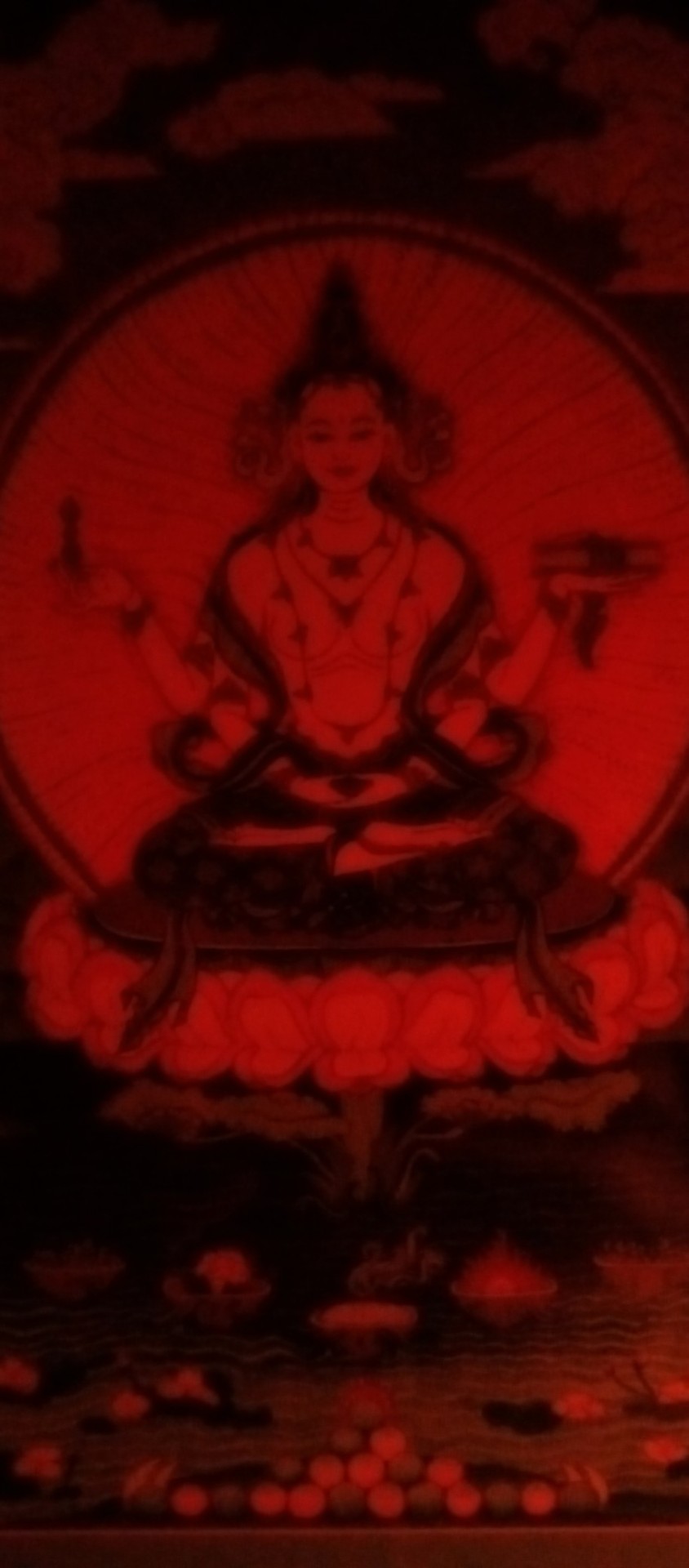
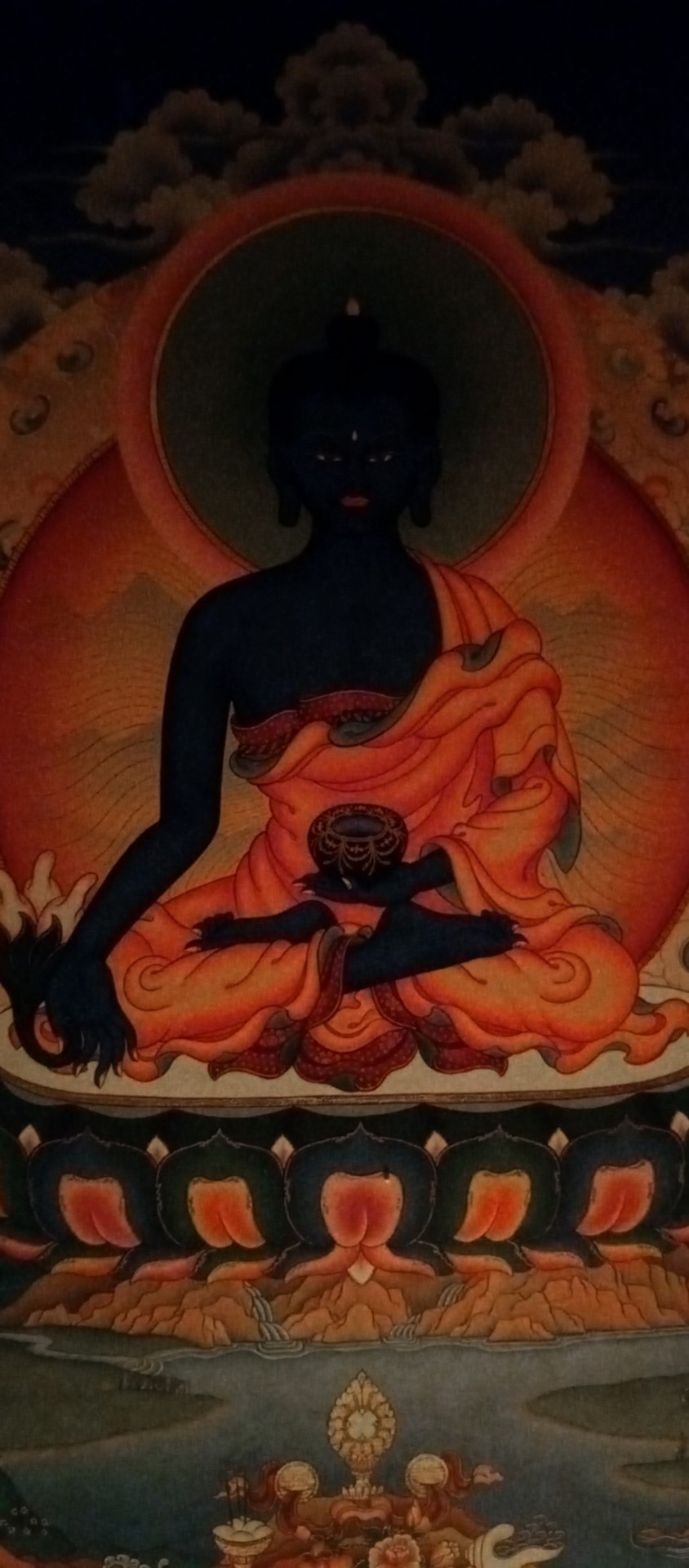

0 notes